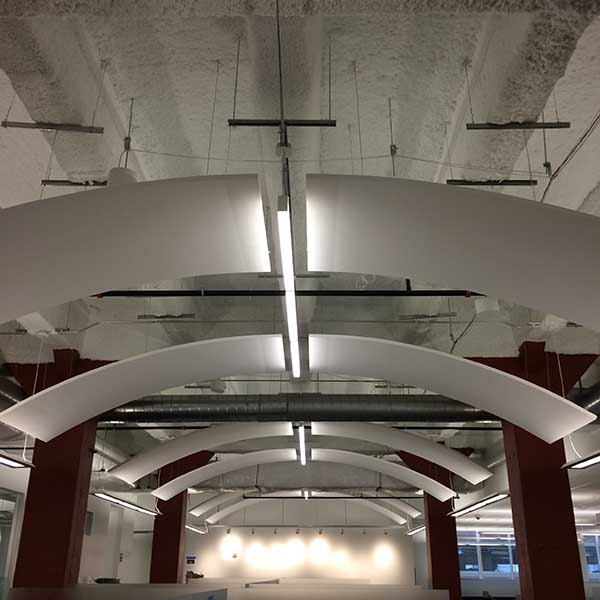Creating open, collaborative work spaces has become common place. They can foster teamwork and innovation. However, one key to their success is ensuring acoustics are optimized. Below, we’re sharing some tips and products that can help do just that.
What are some items businesses should consider when evaluating the acoustics in their office?
- Whether they want to have an exposed or finished ceiling.
- The number of people in their office.
- The role of the employees. (For example, are they making sales calls?)
- The culture of the company.
- Their building type.
What are some common acoustic design solutions, and how do they work?
- Acoustic Ceilings: For companies who want a finished ceiling, this option places sound absorbing insulation along with ceiling tiles to help eliminate sound transfer through the ceiling.
- Acoustic “Clouds:” These are commonly used in open or exposed ceilings and are made of acoustic tiles or drywall with acoustic insulation. Here, acoustic clouds are placed over areas with a lot of noise, so companies can achieve the look they want without sacrificing a quiet work environment.
- Wall Panels: Wall panels not only absorb sound, but also offer a design element too. They come in various fabrics, patterns and textures, adding interest to a space.
- Sound Masking Systems: White noise is broadcast throughout the space to mask sound within an open office.
- Furniture Finishes: The use of soft materials can help absorb and lessen noise.

Which of these works best?
It’s important to have a combination of solutions in place. Every company and space is different, so select a mix that is best for your size and culture.
How can companies determine which are best for their office?
Hire a good design firm to help you navigate your options. They will review your needs and can recommend products that would suit your company best.
Can layout improve acoustics? If so, how?
Yes, use panels and ceilings strategically. Look for areas where it is most needed. These could be departments or rooms with loud machinery, like printers or common areas, such as break rooms. Call centers or busy reception areas also benefit from acoustic masking products.
How can acoustics be easily improved in existing, occupied spaces?
Wall panels are a good option, because they can be attached easily. Furniture materials can be swapped out with minimal disruption. Sound masking systems also work, because they can be easily retrofitted for your space.

